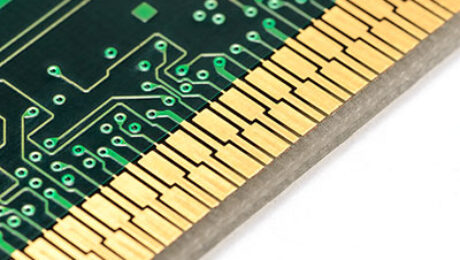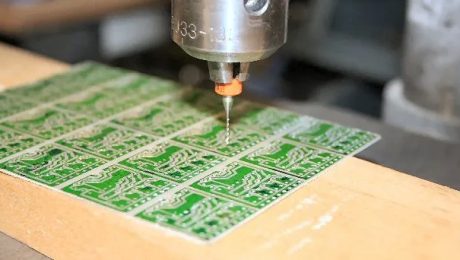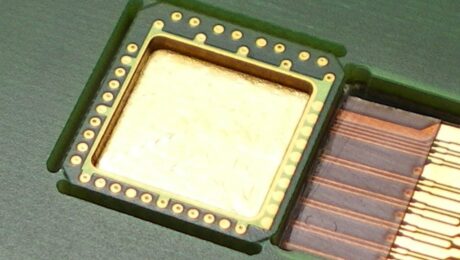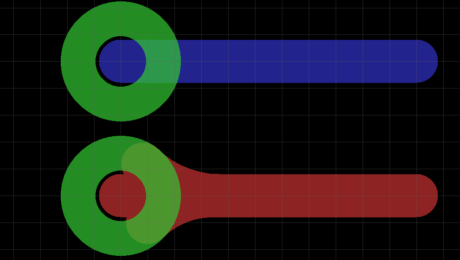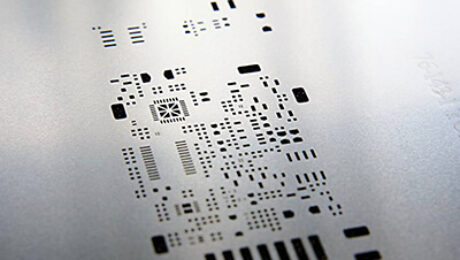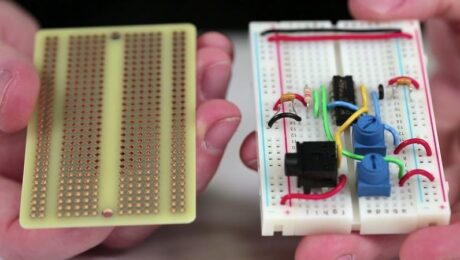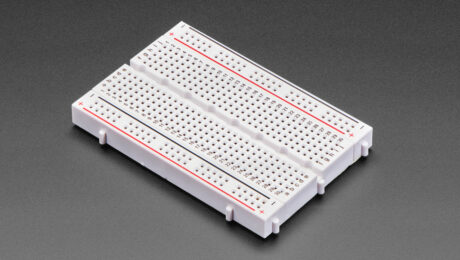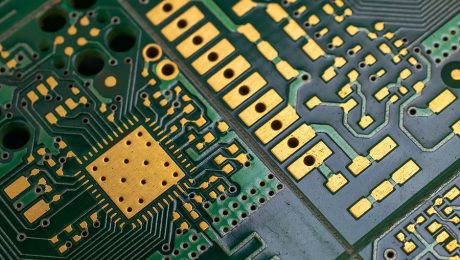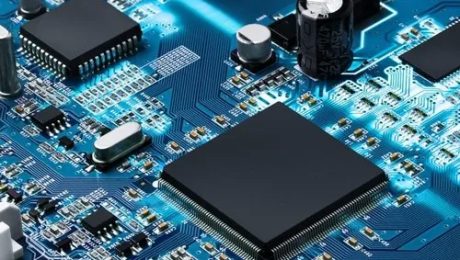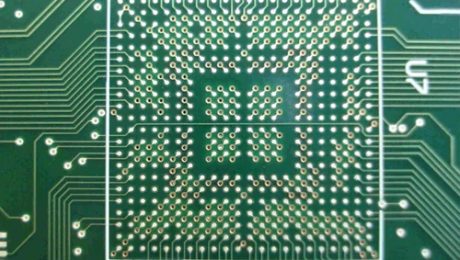
PCB Gold Fingers: What You Should Know
PCB Gold Fingers: What You Should Know
The world of electronics is constantly evolving, with each technological leap requiring increasingly sophisticated components. Among these components, PCB gold fingers have emerged as essential connectors that enable high-performance devices. This article explores the world of gold fingers, delving into their functions, applications, and how they’re changing the way we interact with technology.
Table of Contents
Our Recommended Quick Turn PCB

As a fast turnaround or quick-turn PCB Assembly Manufacturer /factory in Shenzhen China, FX PCB is able to fulfill orders in a fast delivery time with our modern technologies used in production.
Our factory carries out the assembly and installation of printed circuit boards to order. During the development and manufacturing process, constant quality control is carried out. We strictly follow your Gerber file and Bom list for your fast turnaround or quick turn PCBA projects, and we will also be glad to suggest you the alternative for your passive components to decrease your cost, but all replacement components need you to approve and make the final decision on whether you want to use them.
What Are PCB Gold Fingers?
Gold fingers, often referred to as edge connectors, are a crucial but often overlooked component of modern electronics. These specialized connectors are typically found on the edge of a printed circuit board (PCB). What makes them stand out is their distinctive gold-plated contact surfaces. But what exactly are PCB gold fingers, and why are they essential?
Gold fingers serve as the bridge between the PCB and other electronic components, ensuring a reliable electrical connection. These connectors are called “PCB gold fingers” due to the thin layer of gold plating applied to their contact areas. This gold plating provides several key benefits, including resistance to corrosion and low contact resistance, making gold fingers an ideal choice for high-performance electronics.
How Are Gold Fingers Used?
Gold fingers play a pivotal role in connecting a PCB to various electronic devices, such as expansion cards, memory modules, or connectors. Let’s explore some of the primary ways gold fingers are utilized in the world of electronics:
1. Memory Modules:
Memory modules, such as RAM (Random Access Memory), are essential components in virtually all computing devices, from desktop computers to laptops and servers. Gold fingers on RAM modules serve a critical purpose: they allow these modules to establish a secure and high-speed connection with the motherboard.
The gold fingers on a RAM module align precisely with the corresponding slots on the motherboard, and when the module is inserted, the gold fingers make electrical contact with the motherboard’s connectors. This ensures a reliable data pathway for the rapid exchange of information between the RAM and the central processing unit (CPU).
The high-quality gold plating on these connectors contributes to low contact resistance, which is crucial for maintaining data transfer speeds and preventing signal degradation. As computer technology advances, faster and more efficient data transfer is paramount, making gold fingers an indispensable part of modern computing.
2. Graphics Cards:
For gaming enthusiasts and professionals in graphic-intensive fields like 3D modeling and video editing, the role of pcb gold fingers in graphics cards cannot be overstated. Graphics cards, also known as GPUs (Graphics Processing Units), are responsible for rendering images and videos, often in real-time, at high resolutions and frame rates.
Gold fingers on graphics cards establish a high-speed data connection with the motherboard. The bandwidth and reliability of this connection are critical for smooth and responsive graphics rendering. Gamers, in particular, depend on the seamless operation of graphics cards to enjoy immersive gameplay experiences. Any interruption or data transfer issues would result in lag, stuttering, or even complete system crashes.
The gold plating on these connectors ensures that the electrical signals can be transmitted with minimal interference. Furthermore, the precise alignment of gold fingers with the motherboard’s connectors is vital to providing a stable connection, even during intense graphics processing.
3. Storage Devices:
Solid-State Drives (SSDs) and Hard Disk Drives (HDDs) are at the heart of data storage in modern computers and electronic devices. PCB Gold fingers on these storage devices enable them to interface efficiently with the motherboard, ensuring data is read and written at high speeds and with minimal latency.
For SSDs, gold fingers establish a connection to the motherboard that allows for the rapid transfer of data between the storage device and the CPU. The ability to read and write data quickly is essential for tasks like booting up an operating system, loading applications, and transferring files.
In the case of HDDs, pcb gold fingers perform a similar role. These connectors ensure that data is reliably transmitted between the spinning disks inside the HDD and the motherboard. The gold plating on the connectors helps reduce contact resistance, ensuring data transfer occurs smoothly and efficiently.
4. Expansion Cards:
The expandability of a computer is a key aspect of its functionality. PCB gold fingers are also present on various expansion cards, such as sound cards, network cards, and other specialized hardware interfaces. These expansion cards allow users to customize and enhance their computing experience by adding specific features and functionalities.
Gold fingers on expansion cards establish connections with the motherboard that enable these cards to function seamlessly. Whether it’s a high-quality audio signal from a sound card or a high-speed network connection from a network card, these connectors ensure that data is transmitted reliably and without interference.
In the context of expansion cards, the precise alignment of PCB gold fingers with the motherboard connectors is crucial. Any misalignment or imperfect contact could result in data dropouts or poor performance. Gold fingers, with their high-quality plating, minimize such issues, contributing to the overall reliability of the expansion cards.
Gold Finger Specifications
To meet the rigorous demands of modern electronics, gold fingers must adhere to specific specifications:
Material:
Gold fingers are typically constructed from a substrate material, most commonly FR4, and coated with a thin layer of gold. The thickness of the gold layer is typically measured in microns.
Width and Length:
Precise dimensions of gold fingers are crucial. They must align accurately with corresponding connectors on other devices to ensure a reliable electrical connection.
Plating Quality:
The quality of the gold plating is a critical factor in the performance and longevity of gold fingers. High-quality plating minimizes the risk of oxidation and corrosion, ensuring a durable and dependable connection.
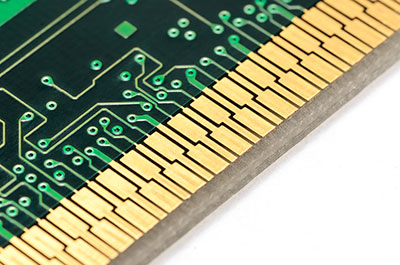
PCB Gold Fingers Beveling
An essential design technique in the creation of pcb gold fingers is beveling. Beveling involves creating a slight angle at the edges of the gold fingers, rather than leaving them flat. This design approach offers several advantages:
Improved Insertion and Removal:
Beveled gold fingers make it easier to insert and remove components, reducing wear and tear on both the PCB and the connectors. This is particularly beneficial for devices that may need to be upgraded or serviced.
Reduced Damage:
The beveled edges reduce the chances of damage to the gold plating during insertion and removal of components, enhancing the longevity of the PCB and connected devices.
Enhanced Signal Integrity:
The beveled design minimizes signal distortion by ensuring a consistent and reliable connection between the PCB and other devices. This is crucial for maintaining the quality of data transfer and reducing potential data errors.
Gold Finger Applications
Gold fingers have a broad range of applications across various industries and products. Their unique properties and capabilities make them indispensable in a multitude of electronic devices:
Consumer Electronics:
Gold fingers are integral to the operation of smartphones, tablets, laptops, gaming consoles, and other consumer electronics. These connectors ensure smooth and reliable data connections, contributing to the overall user experience.
Aerospace:
The aerospace industry relies on gold fingers in avionics systems, communication equipment, satellites, and other critical components. In aerospace applications, reliability is paramount, and gold fingers play a crucial role in ensuring data integrity.
Medical Devices:
Medical equipment, such as Magnetic Resonance Imaging (MRI) machines, patient monitoring devices, and diagnostic equipment, depend on gold fingers for precision and accuracy. These connectors are essential for reliable data transmission in the medical field.
Automotive:
In the automotive industry, gold fingers are found in control modules, infotainment systems, sensors, and various electronic components. They contribute to the safety, performance, and reliability of modern vehicles.
Gold Fingers Are Changing the World
The unassuming gold fingers may appear as mere connectors, but their influence on the world of electronics and beyond is profound. Here’s how gold fingers are actively reshaping our world:
Miniaturization:
Gold fingers enable the development of smaller, more powerful electronic devices. The miniaturization of technology is evident in the smartphones, wearables, and IoT (Internet of Things) devices that continue to advance, making technology more accessible and integrated into our daily lives.
Data Speed and Capacity:
Gold fingers, with their high-quality connectors, support faster data transfer and increased storage capacity. This is fundamental to our ability to process and store information, from streaming high-definition videos to managing massive databases.
Reliability:
Gold fingers ensure the reliability of electronics in critical sectors such as healthcare, aerospace, and automotive. In these industries, the consequences of electronic failure can be severe.
Gold fingers play a pivotal role in maintaining consistent and dependable connections.
Environmental Sustainability:
The gold used in gold fingers is highly recyclable. As the electronics industry increasingly focuses on sustainability and reducing electronic waste (e-waste), gold fingers play a role in promoting responsible practices.
Conclusion:
In the rapidly advancing world of electronics, gold fingers are unsung heroes, connecting us to the technologies that shape our lives. These small, gold-plated connectors play a pivotal role in enabling faster, more reliable, and sustainable electronic systems. As technology continues to evolve, the impact of gold fingers on our daily lives and the broader world becomes increasingly evident, making them a vital component in the ever-changing landscape of innovation.

I am Peter Gong. I have been working in PCB and PCBA industry for 15+ years now. I have been a part of the PCB revolution with my dedication to circuit board technologies and creative ideas. I write in FX PCB to impart my knowledge on PCB and PCBA for all circuit board lovers, manufacturers, and users.
Our Recommended Products for You
- Published in Informative
PCB Drilling – The Detailed Discussion
PCB Drilling – The Detailed Discussion
In the modern era, where electronics are an integral part of our lives, the unsung heroes are often the Printed Circuit Boards (PCBs) – those unassuming green (or sometimes red) rectangles that power our devices. The creation of these intricate PCBs involves a multifaceted process, and one of the most crucial stages in their fabrication is PCB drilling. In this comprehensive article, we’ll delve into the world of PCB drilling, exploring its significance, the mechanics behind it, the various tools, pcb drilling machines involved, and the intricate process that transforms a plain board into a functional circuit.
Table of Contents
Our Recommended Quick Turn PCB

As a fast turnaround or quick-turn PCB Assembly Manufacturer /factory in Shenzhen China, FX PCB is able to fulfill orders in a fast delivery time with our modern technologies used in production.
Our factory carries out the assembly and installation of printed circuit boards to order. During the development and manufacturing process, constant quality control is carried out. We strictly follow your Gerber file and Bom list for your fast turnaround or quick turn PCBA projects, and we will also be glad to suggest you the alternative for your passive components to decrease your cost, but all replacement components need you to approve and make the final decision on whether you want to use them.
What is PCB Drilling?
PCB drilling, in essence, is the art of creating precision holes in a PCB’s substrate, which is typically composed of fiberglass-reinforced epoxy. These holes serve as receptacles for component leads, vias, and pathways, ensuring the seamless flow of electricity and data. The exact placement and size of these holes are pivotal in the functionality of the final electronic device.
How It Works
PCB drilling is no mere task of drilling holes; it’s a meticulous process that requires a keen eye for detail and precision. Here’s how it all comes together:
Design and Alignment:
Before the drilling commences, the PCB’s design is loaded into a Computer-Aided Design (CAD) system. This digital blueprint provides precise coordinates for hole placement and size. The PCB is meticulously aligned, and reference points are established to ensure spot-on drilling accuracy.
Selection of Drill Bits:
The choice of drill bits is paramount. These bits, usually crafted from tungsten carbide or high-speed steel, come in various sizes, ranging from minuscule 0.1mm bits to more substantial options, tailored to the PCB’s design requirements.
Drilling Machine Setup:
PCB drilling is primarily conducted with Computer Numerically Controlled (CNC) machines built exclusively for this purpose. The PCB is clamped securely on the machine’s bed, and the drill bits are loaded into the spindle, ready for action.
The Drilling Process:
The CNC machine follows the design specifications with pinpoint accuracy. As the drill bits rotate at high speeds, they bore through the substrate, creating holes of precise size and depth. To prevent overheating of the drill bits and protect the PCB from damage, cooling systems are often employed.
Quality Control:
Throughout the process, vigilant quality control measures are enacted to ensure that holes are drilled accurately and without any imperfections, such as burrs or fractures.
Types of PCB Drill Bits
To meet the intricate demands of PCB drilling, a range of drill bits are employed. Some common types of drill bits include:
Twist Drills:
These are the go-to drill bits for standard PCB drilling tasks.
Router Bits:
These specialized bits are used for routing out areas of copper on the PCB, typically for creating complex shapes or cutouts.
Micro-Drills:
For drilling those minuscule holes and vias in high-density PCBs, micro-drills are essential.
Diamond Drills:
Designed with a diamond-coated tip, these bits are reserved for drilling into ceramics and other hard materials.
PCB Drilling Machines
The machinery used for PCB drilling varies from manual to fully automated CNC machines, depending on the specific design and production scale. The main types include:
Manual Drilling Machines:
Ideal for prototyping or low-volume production, these machines are manually operated by an operator.
Semi-Automatic Drilling Machines:
These machines strike a balance between manual control and automated positioning, ensuring precise hole alignment.
Fully Automatic CNC Drilling Machines:
High-precision powerhouses, these machines are deployed for large-scale PCB manufacturing. They execute complex drilling tasks with impeccable accuracy, following design specifications to the letter.
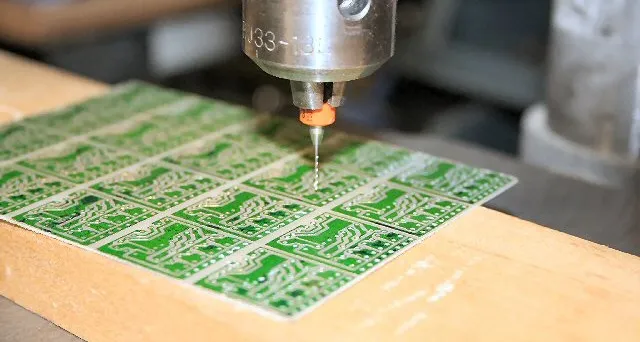
Process of PCB Drilling
The process of PCB drilling is part of a broader PCB manufacturing workflow that unfolds as follows:
Design:
The PCB’s digital design is meticulously crafted using CAD software, determining the layout, component placements, and hole positions.
Material Preparation:
The substrate material, typically a copper-clad fiberglass-reinforced epoxy sheet, is meticulously prepared.
Drilling:
As described earlier, this is the stage where the PCB is secured to a CNC machine, and holes are precisely drilled according to the design.
Inspection:
The newly drilled PCB undergoes a thorough inspection, with any defects or misaligned holes rectified at this stage.
Copper Plating:
To enhance electrical connectivity between layers, the holes are often copper-plated.
Etching:
The excess copper is etched away, revealing the desired copper traces and connections.
Solder Mask and Silkscreen:
To protect the traces and provide labeling, the PCB is coated with a solder mask and silkscreen.
Final Inspection:
Before the PCB is deemed ready for use, it goes through a final inspection to ensure all specifications have been met.
Importance of PCB Drilling
The significance of PCB drilling cannot be overstated. PCBs serve as the backbone of nearly all electronic devices. They are responsible for creating the electrical connections that allow components to communicate and function in harmony. Without precision drilling, the integrity of the PCB would be compromised, leading to a myriad of issues, including faulty connections, short circuits, and potentially damaging electronic components.
Drilling accuracy directly affects the overall performance, reliability, and lifespan of the final product. For high-frequency and high-speed applications, such as those found in advanced electronics and communication devices, even the smallest deviation in hole placement or size can lead to signal degradation or complete failure.
Moreover, miniaturization is a constant trend in the electronics industry. As devices become smaller and more compact, the need for smaller and more precise holes increases. The drilling process must keep pace with these demands, which is why the use of advanced CNC machines and specialized drill bits has become the norm in PCB fabrication.
CNC PCB Drilling Machine
Computer Numerically Controlled (CNC) machines are at the forefront of PCB drilling technology. These machines are equipped with a range of advanced features that make them indispensable in modern PCB fabrication. Let’s explore the role of CNC machines in PCB drilling:
Precision and Accuracy:
CNC machines are designed to deliver unparalleled precision and accuracy. They follow design specifications down to the micrometer, ensuring that holes are placed with exactitude. This is crucial for maintaining signal integrity in high-frequency PCBs and for accommodating the ever-shrinking components in modern electronics.
Speed and Efficiency:
CNC machines operate at high speeds, making them incredibly efficient. They can drill multiple holes in a matter of seconds, vastly improving the overall productivity of PCB manufacturing.
Complex Drilling Patterns:
In modern PCBs, complex drilling patterns are often required to create intricate connections and pathways. CNC machines can effortlessly handle these intricate designs, executing them with remarkable consistency.
Reduced Human Error:
By automating the drilling process, CNC machines significantly reduce the potential for human error. This ensures that the PCBs produced are of the highest quality and reliability.
Scalability:
CNC machines are versatile and can be used for both small-scale prototyping and large-scale production. This scalability makes them an ideal choice for PCB manufacturers of all sizes.
Advancements in PCB Drilling Technology
The world of electronics is ever-evolving, and PCB technology is no exception. PCB drilling has seen significant advancements over the years to keep pace with the increasing demands of the electronics industry. Some key developments in PCB drilling technology include:
High-Speed Drilling:
As electronics continue to push the boundaries of speed and performance, PCBs need to keep up. High-speed drilling machines equipped with advanced spindles and control systems can precisely drill small holes at incredible speeds, making them ideal for high-frequency applications.
Laser Drilling:
Laser technology has found its way into PCB drilling. Laser drills offer extreme precision and the ability to create smaller holes than traditional mechanical drills. They are especially valuable in advanced applications like microelectronics and aerospace.
Automated Tool Changers:
Modern CNC machines often feature automated tool changers. This technology allows for a seamless transition between different drill bits during the drilling process, reducing downtime and improving overall efficiency.
Drilling Depth Control:
Precision drilling often requires control over the depth of the holes. Advanced CNC machines can precisely control the depth of each hole, allowing for the creation of intricate vias and multilayer PCBs.
Enhanced Cooling Systems:
To prevent drill bit overheating and PCB damage, advanced cooling systems have been developed. These systems maintain the optimal operating temperature, even during high-speed drilling.
3D Printing for Drill Templates:
3D printing technology has found applications in creating custom drill templates. These templates provide a guide for drill bits, ensuring precision and repeatability in hole placement.
Software Integration:
The integration of sophisticated software with CNC machines has improved the automation and accuracy of PCB drilling. Software can detect and correct errors in real-time, reducing the chances of defects.
Conclusion
The world of PCB drilling is a fascinating and dynamic one. It is a journey that begins with a digital design and ends with a fully functional circuit board, integrated into the electronic devices we rely on daily. PCB drilling is the core of this process, and its precision and accuracy are pivotal in ensuring that these devices perform reliably.
Advancements in PCB drilling technology are driven by the ever-evolving demands of the electronics industry. From high-speed drilling to laser technology and automated tool changers, these innovations are shaping the future of PCB fabrication.
As electronics continue to infiltrate every aspect of our lives, from smartphones and smart appliances to autonomous vehicles and IoT devices, the role of PCB drilling in shaping our technological landscape cannot be understated. It’s the art of PCB drilling that keeps our devices compact, powerful, and reliable, ensuring that the heart of electronics beats with unwavering precision.

I am Peter Gong. I have been working in PCB and PCBA industry for 15+ years now. I have been a part of the PCB revolution with my dedication to circuit board technologies and creative ideas. I write in FX PCB to impart my knowledge on PCB and PCBA for all circuit board lovers, manufacturers, and users.
Our Recommended Products for You
- Published in Informative
What Is Cavity PCB: Advantages, Applications, and Manufacturing
What Is Cavity PCB: Advantages, Applications, and Manufacturing
Printed Circuit Boards (PCBs) are the backbone of modern electronics, serving as the foundation for connecting and supporting electronic components. Among various types of PCBs, the Cavity PCB, also known as embedded PCB or cavity boards, has gained significant prominence. This article explores what cavity PCBs are, their different types, advantages, applications, and the manufacturing process behind them.
Table of Contents
Our Recommended Quick Turn PCB

As a fast turnaround or quick-turn PCB Assembly Manufacturer /factory in Shenzhen China, FX PCB is able to fulfill orders in a fast delivery time with our modern technologies used in production.
Our factory carries out the assembly and installation of printed circuit boards to order. During the development and manufacturing process, constant quality control is carried out. We strictly follow your Gerber file and Bom list for your fast turnaround or quick turn PCBA projects, and we will also be glad to suggest you the alternative for your passive components to decrease your cost, but all replacement components need you to approve and make the final decision on whether you want to use them.
What is Cavity PCB?
A Cavity PCB, short for Cavity Printed Circuit Board, is a specialized type of PCB that features one or more cavities or recesses within the board itself. These cavities are created by removing specific sections of the PCB substrate material, which can be made of materials like FR-4, Rogers, or other substrates. These cavities are designed to house electronic components, which are then encapsulated to protect them and reduce the overall profile of the PCB.
Types of Cavity PCBs
Cavity PCBs can be categorized into several types, depending on their specific design and application:
1. Blind Cavity PCBs:
Blind cavity PCBs have cavities that do not penetrate through the entire PCB. These are ideal for applications where components need to be partially embedded while maintaining a flat surface on the opposite side of the board.
Blind cavity PCBs are frequently used in mobile devices where various components, like the camera module or sensors, need to be partially recessed into the PCB to achieve a sleek, flat design. The recessed components allow for a smoother, more streamlined exterior design.
2. Buried Cavity PCBs:
Buried cavity PCBs have cavities that are entirely enclosed within the board and do not extend to the outer layers. This design is often used to reduce the overall thickness of the PCB and protect sensitive components.
In high-density electronics, such as high-performance laptops or medical devices, designers use buried cavity PCBs to create a thinner profile without compromising the integrity of the components. By encapsulating components within the PCB layers, these boards can be made thinner, improving the overall form factor.
3. Through Cavity PCBs:
Through cavity PCBs have cavities that extend from one side of the board to the other, providing easy access for component placement and removal. These are commonly used in applications where components need to be mounted on both sides of the PCB.
In telecommunications equipment, for example, where space is limited, through cavity PCBs offer a solution to house components on both sides of the board. The through-cavity design enables efficient use of board space and allows for greater component density.
Advantages of Cavity PCBs
Cavity PCBs offer several advantages that make them desirable for various applications:
1. Reduced Profile:
The primary advantage of cavity PCBs is their ability to reduce the overall height of a device by embedding components within the PCB. This is particularly useful in applications with strict space constraints.
In the automotive industry, for instance, where designers aim to make sleek, low-profile infotainment systems, cavity PCBs are instrumental. By embedding components like touchscreen controllers and interface connectors within the PCB, automotive displays can maintain a slim, aesthetically pleasing design.
2. Enhanced Thermal Management:
Cavity PCBs can help in dissipating heat generated by embedded components more effectively, as the PCB itself acts as a heat sink.
In the field of power electronics, thermal management is crucial to maintaining component reliability. Cavity PCBs are employed to create compact, efficient power modules. The design allows components to be mounted close to the PCB’s metal core, enhancing heat dissipation and ensuring long-term performance.
3. Protection and Reliability:
Components housed within cavities are shielded from external factors, improving their reliability and protection against environmental elements.
In the aerospace and defense sector, where electronics must perform reliably in extreme conditions, cavity PCBs are used to safeguard critical components. These boards are often sealed with ruggedized enclosures, ensuring that sensitive electronics are shielded from moisture, dust, and other environmental threats.
4. Improved Signal Integrity:
The reduced electromagnetic interference and shorter signal paths within cavity PCBs can enhance the signal integrity and reduce cross-talk.
Data centers rely on cavity PCBs to maintain the highest levels of signal integrity in their servers and networking equipment. By carefully designing cavity layouts and reducing electromagnetic interference, these PCBs ensure reliable data transmission and minimal data loss.
5. Space Optimization:
Cavity PCBs allow for efficient use of board space, enabling designers to pack more functionality into smaller devices.
In the field of IoT (Internet of Things) devices, where compact design is a priority, cavity PCBs are used to maximize space utilization. This allows designers to include various sensors, wireless modules, and microcontrollers in a small footprint, making IoT devices more versatile and cost-effective.
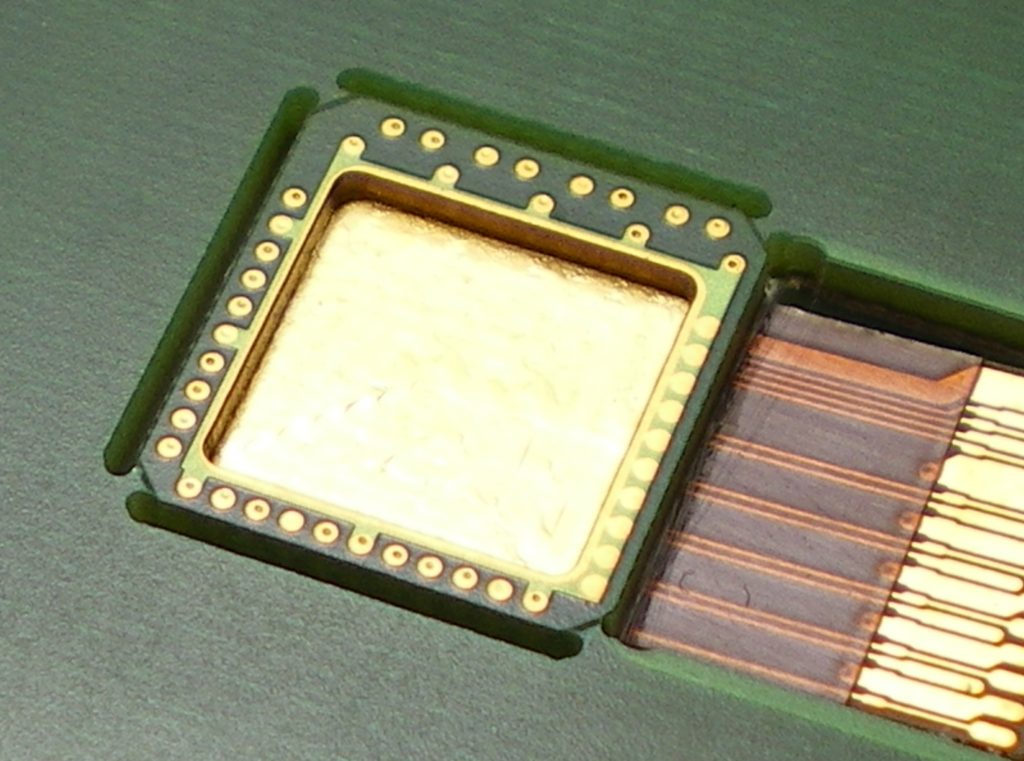
Applications of Cavity PCBs
Cavity PCBs find applications in various industries and sectors, including:
- Aerospace and Defense: Where weight reduction, thermal management, and reliability are crucial. In the aerospace industry, the use of cavity PCBs extends to satellite systems, radar equipment, and avionics, where size and weight constraints are significant.
- Medical Devices: Especially in compact and wearable medical electronics. Cavity PCBs are instrumental in the development of wearable health monitoring devices, such as smartwatches and medical patches. These PCBs allow for the integration of various sensors and wireless communication modules while maintaining a comfortable, low-profile design.
- Telecommunications: For compact, high-performance communication equipment. Cavity PCBs are employed in the manufacturing of advanced routers, switches, and base station equipment. These boards enable telecommunications providers to deliver high-speed and reliable communication services while optimizing space and energy consumption.
- Consumer Electronics: In devices like smartphones and tablets, where slim profiles are important. Smartphone manufacturers rely on cavity PCBs to achieve slim, lightweight designs without compromising on functionality. By embedding components, such as the camera modules and connectors, manufacturers can produce sleek, feature-rich devices.
Manufacturing Process of Cavity PCBs
Manufacturing cavity PCBs involves specialized processes, including:
- Substrate Selection: Choosing the appropriate substrate material is critical to the performance and characteristics of the cavity PCB. The choice of material depends on factors like the operating environment, signal frequency, and cost considerations.
- Cavity Design: Designing the cavity layout and dimensions according to the specific requirements of the components. The design phase involves CAD (Computer-Aided Design) software, which helps create precise and customized layouts.
- Cavity Creation: The cavities are created using mechanical milling, routing, or laser ablation, depending on the design and substrate material. Advanced CNC (Computer Numerical Control) machinery is used for high precision.
- Layer Build-Up: The PCB is built up layer by layer, including the copper layers, using an appropriate lamination process. Multi-layer boards are common in cavity PCBs to accommodate complex component arrangements.
- Copper Plating: Copper is plated onto the cavity walls to ensure proper electrical connectivity. This step is crucial for creating a conductive path from the embedded components to the rest of the circuit.
- Component Placement: Components are assembled within the cavities, and interconnections are established. Advanced automated pick-and-place machines are used for precise component placement, followed by soldering processes.
- Encapsulation: The cavities are sealed or encapsulated using suitable materials to protect the components. This encapsulation can be achieved with various materials, including epoxy resins or specialized potting compounds.
- Testing and Quality Control: Rigorous testing and quality control processes are carried out to ensure the reliability and functionality of the PCB. This includes electrical testing, thermal testing, and inspections to verify that the embedded components are properly seated and connected.
Conclusion
Cavity PCBs represent a significant advancement in PCB technology, allowing for more compact and reliable electronic devices across a range of industries. Their unique advantages, diverse applications, and specialized manufacturing processes make them a valuable choice for engineers and designers working on cutting-edge electronic products. As technology continues to evolve, we can expect cavity PCBs to play an even more prominent role in the design of smaller, more efficient, and more powerful electronic devices. Whether in aerospace, healthcare, telecommunications, or consumer electronics, cavity PCBs are making their mark in shaping the future of technology.

I am Peter Gong. I have been working in PCB and PCBA industry for 15+ years now. I have been a part of the PCB revolution with my dedication to circuit board technologies and creative ideas. I write in FX PCB to impart my knowledge on PCB and PCBA for all circuit board lovers, manufacturers, and users.
Our Recommended Products for You
- Published in Informative
PCB Teardrop: Importance, Design, and Manufacturing
PCB Teardrop: Importance, Design, and Manufacturing
Printed Circuit Boards (PCBs) are the backbone of modern electronics. They are the green (or sometimes other colors) flat boards that hold all the components in our electronic devices, from smartphones to computers to microwave ovens. Every connection on a PCB is essential for the proper functioning of the device, and even a tiny defect can lead to a malfunction. This is where “PCB teardrops” come into play, a concept used in PCB design and manufacturing to ensure these connections are reliable.
In this article, we’ll delve into the world of PCB teardrops in simple terms, exploring what they are, why they matter, and how they contribute to the reliability of your electronic devices.
Table of Contents
Our Recommended Quick Turn PCB

As a fast turnaround or quick-turn PCB Assembly Manufacturer /factory in Shenzhen China, FX PCB is able to fulfill orders in a fast delivery time with our modern technologies used in production.
Our factory carries out the assembly and installation of printed circuit boards to order. During the development and manufacturing process, constant quality control is carried out. We strictly follow your Gerber file and Bom list for your fast turnaround or quick turn PCBA projects, and we will also be glad to suggest you the alternative for your passive components to decrease your cost, but all replacement components need you to approve and make the final decision on whether you want to use them.
What Are PCB Teardrops?
PCB teardrops are not as mysterious as they might sound. Imagine you have a PCB and you want to connect a wire or trace to a hole or via (a hole with conductive material inside). The place where the wire or trace meets the hole might look like a simple connection point. However, PCB designers often modify this connection point to ensure it is robust and dependable.
A PCB teardrop is precisely this modification. Instead of a simple straight-line connection, the copper trace widens gradually as it approaches the hole or via. This widening creates a shape that resembles a teardrop, hence the name.
Now, you might be wondering, why go through the trouble of changing the shape of a connection point on a PCB? Let’s find out.
The Why: Importance of PCB Teardrops
Stress Relief:
When copper traces connect to holes or vias, there can be stress concentrations at these points. Think of it like a weak spot in a chain. If too much stress is concentrated in one area, it can lead to cracks or breaks in the copper or the insulating substrate. The teardrop shape helps distribute mechanical stress more evenly, reducing the risk of these problems.
Better Soldering:
Soldering is the process of joining electrical components to a PCB. For a strong and reliable connection, the solder needs to adhere properly. Teardrop shapes provide more surface area for solder connections. This extra surface area makes it easier for the solder to grip, enhancing the quality and reliability of solder joints.
Mitigating Drill Bit Deviation:
During the PCB fabrication process, drill bits may slightly deviate from their intended position. This tiny deviation can be a big problem if you have a tight, precise design. Teardrops are like a buffer zone for these deviations. They provide a larger landing area for the drill bit, ensuring that the copper trace still makes a solid connection even if the drill bit doesn’t hit its target spot-on.
Signal Integrity:
In some applications, especially those involving high-frequency signals, maintaining signal integrity is crucial. Teardrop shapes can help with this. They reduce impedance variations at connection points, ensuring that the signal remains strong and consistent as it travels through the PCB.
Enhanced Reliability:
Ultimately, PCB teardrops contribute to the overall reliability of the PCB. They minimize the chances of open or weak connections, which can lead to electrical issues and, in the worst cases, complete failure of the electronic device.
PCB Teardrop Design
Now that we understand why PCB teardrops are important, let’s take a look at how they are designed.
PCB designers use specialized software tools to create PCB layouts. These tools often come with features that allow designers to easily implement teardrops where needed. Here’s a simplified breakdown of the design process:
Identify Critical Connections:
The first step is to identify the connections on the PCB that are critical for the device’s performance. These could be high-current connections, connections carrying sensitive signals, or any other connections where reliability is paramount.
Apply Teardrop Modification:
Once the critical connections are identified, the designer uses the PCB design software to apply the teardrop modification. This involves widening the copper traces gradually as they approach the hole or via. The degree of widening depends on the specific design requirements.
Check for Manufacturing Compatibility:
While teardrops are valuable for reliability, not all PCB fabrication processes may support them. So, the designer must also consider the manufacturing capabilities and constraints of the chosen PCB fabrication process. It’s a delicate balance between design requirements and manufacturing feasibility.
Iterate and Refine:
PCB design is often an iterative process. Designers may go through multiple iterations to optimize the teardrop shapes, ensuring they provide the desired benefits without causing manufacturing issues.
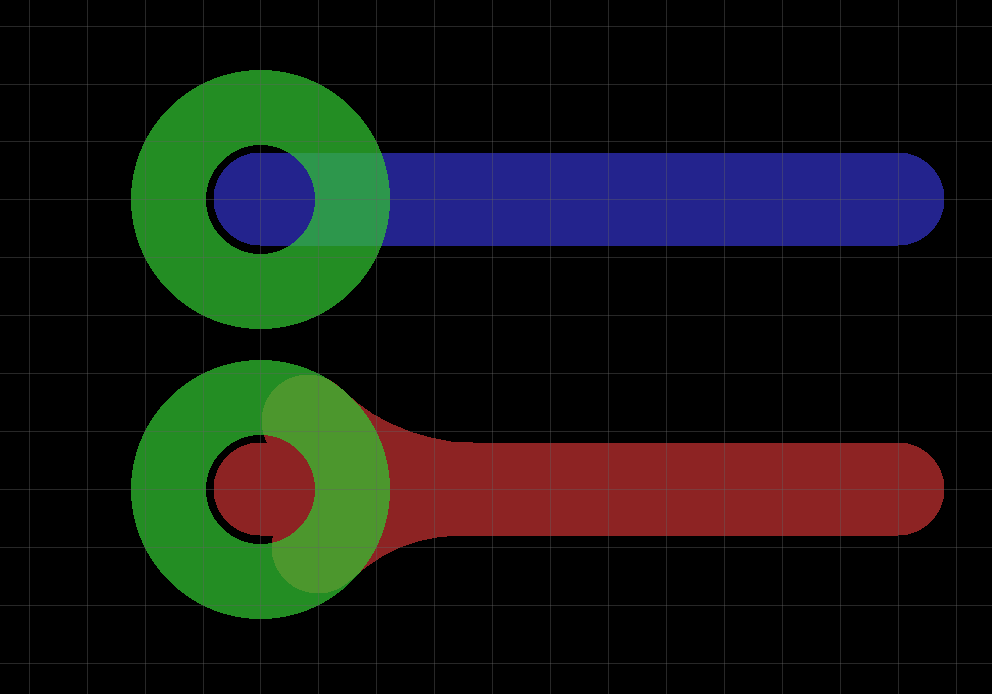
Manufacturing PCB Teardrops
Designing teardrops is one thing, but manufacturing them is another. Let’s explore how PCB teardrops are brought to life during the manufacturing process:
Laser Direct Imaging (LDI):
One of the methods used to create teardrops during PCB manufacturing is Laser Direct Imaging (LDI). LDI systems use lasers to expose the photosensitive material on the PCB substrate. This precise process allows for the creation of intricate patterns, including teardrops, with high accuracy.
Advanced PCB Fabrication Techniques:
Depending on the complexity of the design and the desired teardrop shapes, advanced PCB fabrication techniques may be employed. These techniques can include precision etching and plating processes to achieve the desired copper trace shapes.
Quality Control:
Throughout the manufacturing process, quality control measures are in place to ensure that the teardrops are correctly formed and meet the design specifications. Any deviations or defects are identified and corrected to maintain the reliability of the PCB.
Practical Applications of PCB Teardrops
PCB teardrops find applications in a wide range of electronic devices. Here are a few practical examples to illustrate their importance:
Consumer Electronics:
Think of your smartphone or tablet. These devices have densely packed PCBs to accommodate various components. Teardrops help ensure reliable connections between these components and the PCB, reducing the risk of issues like dropped calls or touch screen malfunctions.
Medical Devices:
Medical devices, such as heart monitors or infusion pumps, require high reliability. Teardrops in their PCBs contribute to the overall safety and effectiveness of these devices.
Aerospace and Defense:
In aerospace and defense applications, reliability is paramount. Teardrops help maintain the integrity of critical connections in avionics systems, ensuring the safety and performance of aircraft and military equipment.
Automotive Electronics:
Modern vehicles rely heavily on electronics for various functions, from engine control to entertainment systems. PCB teardrops help ensure the reliability of these electronics, even in harsh automotive environments.
Common Misconceptions
While PCB teardrops offer several benefits, there are also some common misconceptions associated with them:
Not Needed for All Connections:
Not every connection on a PCB requires a teardrop modification. Designers use them selectively on critical connections where they add value.
Not a Magic Solution:
Teardrops are valuable but not a guaranteed solution to all PCB reliability issues. They are just one tool in the designer’s toolbox for creating robust PCBs.
Not Always Supported by All PCB Manufacturers:
Some PCB fabrication processes may not support the creation of teardrops due to their complexity. Designers need to consider the manufacturing capabilities of their chosen fabrication house.
Conclusion
In the world of electronics, reliability is key. PCB teardrops are a small but significant design feature that contributes to the reliability of electronic devices we rely on every day. By distributing mechanical stress, improving soldering, mitigating drill bit deviations, and enhancing signal integrity, teardrops play a crucial role in ensuring that our gadgets and appliances work as expected.

I am Peter Gong. I have been working in PCB and PCBA industry for 15+ years now. I have been a part of the PCB revolution with my dedication to circuit board technologies and creative ideas. I write in FX PCB to impart my knowledge on PCB and PCBA for all circuit board lovers, manufacturers, and users.
Our Recommended Products for You
- Published in Informative
What is a PCB Stencil?
What is a PCB Stencil?
In the dynamic world of electronics manufacturing, where the demand for smaller, more powerful devices is ever-increasing, precision is paramount. The production of modern printed circuit boards (PCBs) relies heavily on a critical tool that ensures accuracy in soldering – the PCB stencil. In this comprehensive guide, we will explore the intricacies of PCB stencils, their significance, various types, manufacturing processes, and how they contribute to the flawless assembly of electronic components.
Table of Contents
Our Recommended Quick Turn PCB

As a fast turnaround or quick-turn PCB Assembly Manufacturer /factory in Shenzhen China, FX PCB is able to fulfill orders in a fast delivery time with our modern technologies used in production.
Our factory carries out the assembly and installation of printed circuit boards to order. During the development and manufacturing process, constant quality control is carried out. We strictly follow your Gerber file and Bom list for your fast turnaround or quick turn PCBA projects, and we will also be glad to suggest you the alternative for your passive components to decrease your cost, but all replacement components need you to approve and make the final decision on whether you want to use them.
Understanding PCB Stencils
What is a PCB Stencil?
A PCB stencil, often referred to simply as an “SMT stencil,” is a thin sheet, typically made from stainless steel or polyimide, meticulously engineered with precise openings or apertures. These openings correspond to the locations of surface mount components on a printed circuit board. The primary purpose of a PCB stencil is to facilitate the precise application of solder paste during the PCB assembly process.
The Significance of PCB Stencils
1. Precision Solder Paste Application
The heart of the PCB stencil’s role lies in ensuring the precise deposition of solder paste onto the PCB. Solder paste, a critical element in soldering, acts as the intermediary between electronic components and the PCB. By restricting the application of solder paste to specific areas, PCB stencils create precise connections, reducing the risk of defects.
2. Consistency and Reliability
Manufactured with meticulous precision using advanced techniques like laser cutting or chemical etching, PCB stencils guarantee consistency throughout the assembly process. Consistent solder paste application leads to reliable solder joints, minimizing the chances of soldering defects such as insufficient or excessive solder.
3. Component Alignment
PCB stencils play a pivotal role in the accurate alignment of surface mount components on the PCB. The openings in the stencil guide the placement of these components, ensuring they are positioned with pinpoint accuracy for optimal electrical connectivity.
The PCB Stencil Printing Process
Stencil Preparation
Before initiating PCB assembly, meticulous preparation of the PCB stencil is necessary. This involves a thorough cleaning to remove any remnants of solder paste from previous uses and ensuring its precise alignment with the PCB.
Solder Paste Application
With the stencil firmly positioned over the PCB, solder paste is carefully applied onto the stencil’s surface. The precise locations for solder paste deposition are dictated by the openings in the stencil.
Squeegee Printing
A squeegee, typically composed of rubber or metal, is employed to uniformly spread the solder paste across the stencil. The squeegee’s motion pushes the paste through the stencil apertures, accurately depositing it onto the PCB.
Stencil Removal
Once the solder paste has been evenly applied, the stencil is gently lifted from the PCB. This leaves solder paste patterns on the PCB that precisely match the component pad locations.
Component Placement
Surface mount components are then meticulously positioned onto the PCB, guided by the solder paste. The paste acts as a temporary adhesive, temporarily securing the components in their designated positions.
Reflow Soldering
The fully assembled PCB, complete with components and solder paste, undergoes reflow soldering. During this stage, the assembly is subjected to specific temperature profiles, causing the solder paste to melt and form strong electrical connections between components and the PCB.
Inspection and Quality Control
Following reflow soldering, a thorough inspection is conducted to ensure proper soldering. Any defects or soldering issues are identified and rectified at this stage to ensure the final product’s quality and reliability.
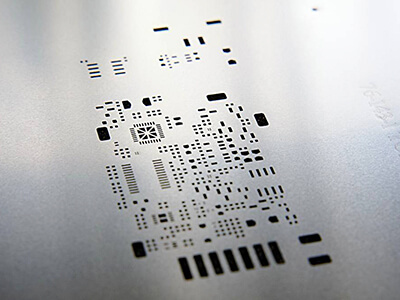
Types of PCB Stencils
Framed Stencils
Framed stencils are the most common type of PCB stencils. They are characterized by a rigid frame that surrounds the stencil material. This frame provides stability and simplifies stencil alignment with the PCB.
Frameless Stencils
In contrast, frameless stencils lack a rigid frame. They are often used in automated stencil printers and are known for their cost-effectiveness and flexibility.
Step Stencils
Step stencils have varying thickness levels across the stencil, allowing for multiple solder paste deposits with varying heights. This proves advantageous in designs requiring different solder volumes for specific components.
The Role of PCB Stencils in Modern Electronics
As the electronics industry continues to push the boundaries of innovation, the demand for smaller, more intricate electronic devices grows. Mobile phones, laptops, tablets, and wearable technology all rely on the precision and efficiency that SMT technology, and by extension, PCB stencils, provide.
Conclusion
In the complex and ever-evolving world of electronics manufacturing, PCB stencils stand as unsung heroes. These unassuming sheets of material wield immense power by ensuring precise solder paste application, maintaining consistency, and guaranteeing the reliability of PCBA. As electronic devices continue to advance, the humble PCB stencil remains a cornerstone tool in the creation of our increasingly interconnected world. The next time you hold a sleek, high-tech gadget, you’ll appreciate the role that the unassuming PCB stencil played in its creation.

I am Peter Gong. I have been working in PCB and PCBA industry for 15+ years now. I have been a part of the PCB revolution with my dedication to circuit board technologies and creative ideas. I write in FX PCB to impart my knowledge on PCB and PCBA for all circuit board lovers, manufacturers, and users.
Our Recommended Products for You
- Published in Informative
Protoboard vs. Breadboard
Protoboard vs. Breadboard
When it comes to building and testing electronic circuits, two common platforms that come to mind are protoboards (also known as perfboards) and breadboards. These tools serve as the foundation for creating temporary or semi-permanent electronic circuits without the need for soldering. However, they have distinct characteristics and use cases, and choosing the right one for your project can significantly impact your workflow and the success of your electronic endeavors. In this article, we see the protoboard vs breadboard advantages or disadvantages and choose the right platform for your electronics projects.
Table of Contents
Our Recommended Quick Turn PCB

As a fast turnaround or quick-turn PCB Assembly Manufacturer /factory in Shenzhen China, FX PCB is able to fulfill orders in a fast delivery time with our modern technologies used in production.
Our factory carries out the assembly and installation of printed circuit boards to order. During the development and manufacturing process, constant quality control is carried out. We strictly follow your Gerber file and Bom list for your fast turnaround or quick turn PCBA projects, and we will also be glad to suggest you the alternative for your passive components to decrease your cost, but all replacement components need you to approve and make the final decision on whether you want to use them.
Understanding Protoboards
Protoboards, often referred to as perfboards or stripboards, are a staple in the toolkit of electronics hobbyists and professionals alike. They are characterized by a board with pre-drilled holes, typically arranged in a grid pattern, and copper traces on one side. The primary purpose of these boards is to facilitate soldered connections between electronic components.
Advantages of Protoboards:
Stability and Durability:
Protoboards offer stable and robust connections due to soldering. Once components are soldered in place, they tend to stay put and withstand mechanical stress better than components on a breadboard.
Suitable for Permanent Projects:
Protoboards are ideal for projects where the circuit configuration is relatively fixed, and you want a more permanent solution. This makes them suitable for constructing prototypes of devices that will eventually be soldered onto a PCB (Printed Circuit Board).
Custom Layouts:
Protoboards provide the flexibility to create custom circuit layouts. You can cut traces where needed and solder components in unique configurations to meet your project’s specific requirements.
Higher Complexity:
Due to their stable connections and customizability, protoboards are well-suited for more complex circuits. Engineers and hobbyists can create intricate designs with a high level of precision.
Cost-Effective:
Protoboards are affordable, making them accessible to hobbyists and students on a budget. They also reduce long-term costs by offering a more permanent solution compared to disposable breadboards.
Disadvantages of Protoboards:
Soldering Skills Required:
To work effectively with protoboards, you need soldering skills. This can be intimidating for beginners or those who prefer solderless solutions.
Less Reusability:
While components can be desoldered and reused, it is not as straightforward as plugging and unplugging components on a breadboard. This makes protoboards less suitable for rapid prototyping or experimenting.
Limited Debugging:
Debugging and testing can be more challenging on a protoboard since soldered connections are not easily adjustable. Any changes or corrections may involve desoldering and resoldering components, which can be time-consuming.
Exploring Breadboards
Breadboards, on the other hand, are synonymous with quick prototyping and experimentation in electronics. They are favored by beginners and professionals alike for their ease of use and the ability to create temporary circuits without soldering.
Advantages of Breadboards:
Solderless Construction:
One of the most significant advantages of breadboards is that they do not require soldering. Components are connected by inserting their leads into the holes on the board, allowing for quick adjustments and changes.
Beginner-Friendly:
Breadboards are perfect for newcomers to electronics. They provide a low barrier to entry, allowing beginners to get started with circuit manufacturing without the need for soldering irons or specialized equipment.
Reusable:
Breadboards are highly reusable. Components can be easily inserted and removed, making them ideal for experimenting, testing, and iterative design processes.
Rapid Prototyping:
If you need to test an idea or concept quickly, a breadboard allows you to do so efficiently. You can assemble a circuit in minutes and modify it as needed without any soldering-related delays.
Visual Feedback:
Breadboards offer a clear and intuitive way to visualize your circuit. The layout of components and connections is readily apparent, making it easier to identify and rectify errors.
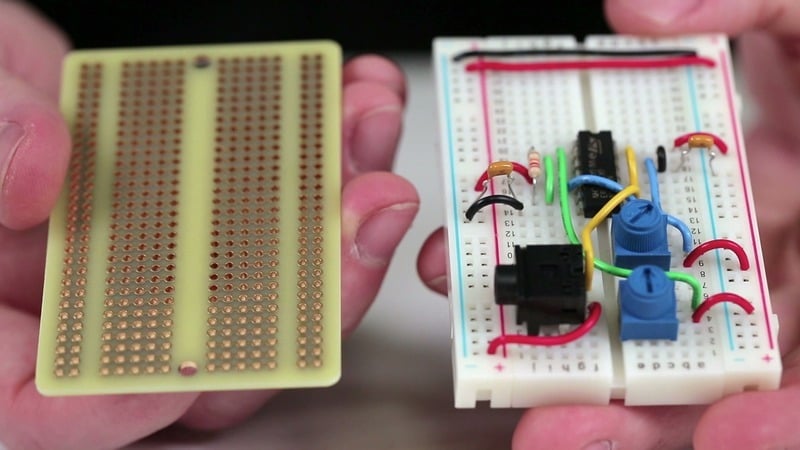
Disadvantages of Breadboards:
Limited Stability:
Connections on breadboards can become loose over time, especially if you frequently insert and remove components. This can lead to intermittent or unreliable connections in complex circuits.
Simplified Circuits:
Breadboards are best suited for simpler circuits. As the complexity of your circuit increases, it can become challenging to maintain order and avoid clutter on the board.
Not for Permanent Solutions:
While breadboards are excellent for prototyping, they are not suitable for permanent projects. The temporary nature of the connections means that they are not as robust or durable as soldered connections on a protoboard.
Choosing the Right Platform for Your Project
The choice between a protoboard and a breadboard ultimately depends on the nature of your project, your level of expertise, and your specific requirements. Here are some guidelines to help you make an informed decision:
When to Use Protoboards:
Permanent Projects:
If you are working on a project intended for long-term use or production, protoboards are a suitable choice. They provide stable connections and a more durable solution.
Complex Circuits:
Protoboards excel in handling complex circuits that require precision and custom layouts. Engineers often turn to protoboards when building prototypes for more advanced electronic devices.
Soldering Proficiency:
If you are comfortable with soldering and have the necessary equipment, protoboards offer a valuable platform for your electronic projects.
When to Use Breadboards:
Rapid Prototyping:
For quick experimentation, idea testing, and proof of concept, breadboards are unbeatable. They allow you to assemble and modify circuits on the fly, saving time and effort.
Beginners:
If you are new to electronics or want to introduce someone to the world of circuit building, breadboards are an excellent starting point. They offer a gentle learning curve and require no soldering skills.
Temporary Testing:
When you need to test a circuit or concept before committing to a permanent design, breadboards provide a flexible and convenient platform.
Visualization:
Breadboards are valuable for visually understanding circuit connections. They are a useful tool for education and documentation purposes.
Conclusion
Protoboards and breadboards are indispensable tools in the realm of electronics. They each serve specific purposes and cater to different skill levels and project requirements. By understanding their advantages and disadvantages, you can make an informed decision about which platform to use for your next electronics project.
In summary, protoboards offer stability, durability, and flexibility for permanent or complex projects, while breadboards provide a solderless, beginner-friendly, and rapidly adjustable platform for quick prototyping and experimentation. Your choice between the two will depend on your project’s goals, your level of expertise, and your preferred workflow. Regardless of your choice, both protoboards and breadboards are essential allies in the world of electronics innovation.

I am Peter Gong. I have been working in PCB and PCBA industry for 15+ years now. I have been a part of the PCB revolution with my dedication to circuit board technologies and creative ideas. I write in FX PCB to impart my knowledge on PCB and PCBA for all circuit board lovers, manufacturers, and users.
Our Recommended Products for You
- Published in Informative
How to Use a Breadboard and How It Works
How to Use a Breadboard and How It Works
Breadboards are indispensable tools in the world of electronics and prototyping, serving as the foundation for creating and testing various electronic circuits. They are especially popular among beginners and experienced hobbyists due to their ease of use and versatility. In this comprehensive guide, we will explore the ins and outs of using a breadboard and delve deep into how it works, equipping you with the knowledge needed to become a proficient electronics enthusiast.
Table of Contents
Our Recommended Quick Turn PCB

As a fast turnaround or quick-turn PCB Assembly Manufacturer /factory in Shenzhen China, FX PCB is able to fulfill orders in a fast delivery time with our modern technologies used in production.
Our factory carries out the assembly and installation of printed circuit boards to order. During the development and manufacturing process, constant quality control is carried out. We strictly follow your Gerber file and Bom list for your fast turnaround or quick turn PCBA projects, and we will also be glad to suggest you the alternative for your passive components to decrease your cost, but all replacement components need you to approve and make the final decision on whether you want to use them.
Understanding the Breadboard
Before we dive into the practical aspects of using a breadboard, let’s thoroughly understand its structure and components.
A breadboard typically consists of a rectangular plastic board with numerous holes arranged in rows and columns. These holes serve as insertion points for electronic components and facilitate connections without the need for soldering. There are two main sections on a breadboard: the terminal strips and the bus strips.
Terminal Strips:
- The horizontal rows of holes on a breadboard are called terminal strips.
- Each row typically contains five holes, conveniently labeled with numbers (usually ranging from 1 to 30 or more) for easy reference.
- The five holes in each row are electrically connected, providing a common connection point for components.
Bus Strips:
- The two vertical columns on the sides of the breadboard are known as bus strips.
- These bus strips run the entire length of the board and are usually labeled as + (positive) and – (negative).
- The + and – bus strips are used to provide power to the breadboard.
How Does a Breadboard Works
With a solid understanding of the breadboard’s structure, let’s delve deeper into how it works.
Component Placement:
- Electronic components, such as resistors, LEDs, capacitors, transistors, and integrated circuits, are inserted into the holes on the breadboard.
- Components can be placed both horizontally and vertically across the terminal strips.
- Ensure that the component’s legs or leads are securely inserted into the appropriate holes.
Electrical Connections:
- The fundamental principle of a breadboard is the electrical connections it offers.
- The holes in each row of the terminal strips are electrically connected, enabling components to share a common electrical connection.
- Components can be connected in parallel by placing them in the same row or in series by placing them in different rows.
- The ability to make both series and parallel connections provides tremendous flexibility in circuit design.
Power Distribution:
- The + and – bus strips on the sides of the breadboard are used to supply power to your circuit.
- Typically, the + strip is used for the positive supply voltage (e.g., 5V or 3.3V), while the – strip is used for the ground (0V).
- You can connect power sources, such as batteries, benchtop power supplies, or external power adapters, to these bus strips.
- Power rails are used to distribute power from these bus strips to different sections of the breadboard, making it easy to power various parts of your circuit.
Jumper Wires and Interconnections:
- Jumper wires are essential accessories when working with a breadboard.
- They are used to create connections between different points on the breadboard.
- Jumper wires can be used to connect components, bridge gaps, and route signals.
- They come in various lengths and colors, allowing for customization of your circuit layout.
Testing and Prototyping:
- Breadboards excel in the prototyping of electronic circuits because they enable you to rapidly assemble and modify circuits without the need for soldering.
- You can quickly test your circuit’s functionality, make adjustments, and troubleshoot issues as needed.
- The ability to experiment with various components and configurations is a significant advantage for both beginners and experienced electronics enthusiasts.
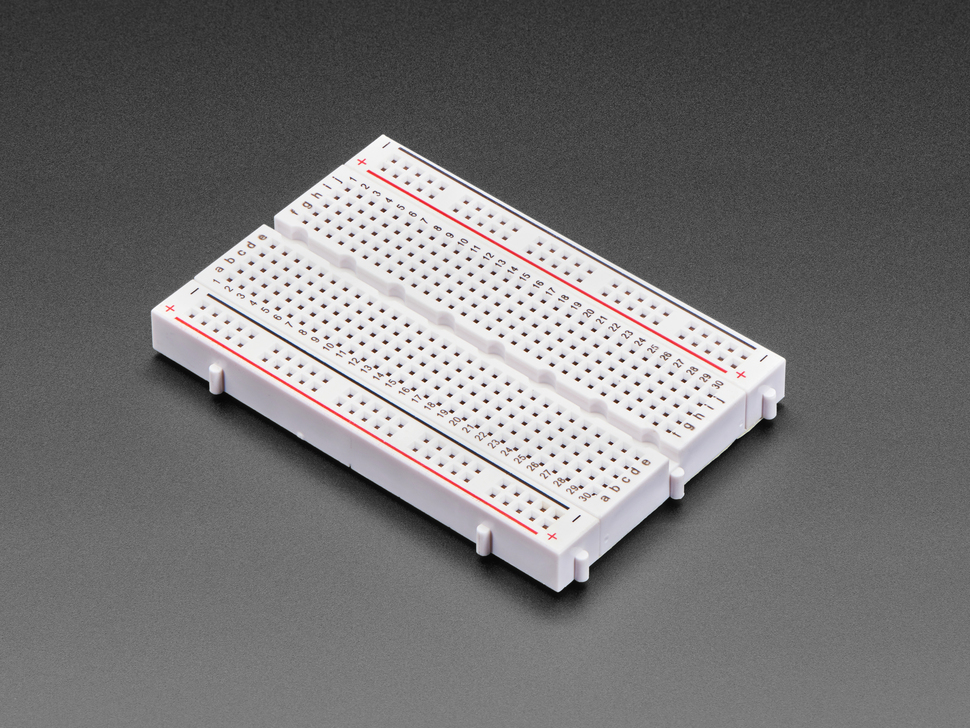
How to Use a Breadboard?
Now that we’ve covered the basics of breadboarding, let’s explore some advanced techniques to take your breadboarding skills to the next level.
Using Breadboard Power Supplies:
- While you can use external power sources, breadboards often come equipped with built-in power supplies.
- These built-in power supplies allow you to easily provide voltage to your circuit without additional connections.
- Understanding how to use these built-in power supplies can simplify your breadboarding experience.
Breadboard Layout and Organization:
- As your circuits become more complex, organization and layout become critical.
- Learning how to arrange components effectively and minimize clutter on the breadboard can help you build more reliable and maintainable circuits.
- Consider using color-coding or labeling for better organization.
Signal Integrity and Noise Management:
- In advanced electronics projects, signal integrity and noise management become significant concerns.
- Techniques such as using decoupling capacitors, minimizing signal crosstalk, and carefully routing sensitive signals can enhance the performance of your circuits.
Breadboard-Compatible Components:
- Some components are designed specifically for breadboarding, making them easier to work with.
- Breadboard-compatible components often have leads or pins that fit neatly into the breadboard holes without bending or requiring special adapters.
Common Mistakes and Troubleshooting
As with any skill, there are common mistakes that beginners might encounter when working with breadboards. Understanding these issues and how to troubleshoot them is essential.
Loose Connections:
- Components that are not securely inserted into the breadboard holes can result in loose connections.
- To troubleshoot, ensure that all components are firmly seated in their respective holes.
Short Circuits:
- Accidental short circuits can occur if two adjacent rows on the breadboard are bridged with a jumper wire or component.
- Carefully inspect your connections and remove any unintended bridges to resolve short circuits.
Incorrect Component Orientation:
- Some components, like diodes and polarized capacitors, have a specific orientation.
- Placing these components incorrectly can lead to circuit malfunctions.
- Always double-check the component datasheet or markings to ensure the correct orientation.
Faulty Components:
- Sometimes, components themselves may be faulty.
- To identify faulty components, you can swap them with known working ones or use a multimeter for testing.
Conclusion
In conclusion, a breadboard is an indispensable tool for anyone working with electronics. By mastering the art of breadboarding, you can swiftly prototype and experiment with a wide range of electronic circuits.
Whether you’re a beginner taking your first steps into electronics or an experienced enthusiast tackling advanced projects, a solid understanding of how to use a breadboard and how it works is a valuable asset. So, pick up a breadboard, gather your components, and embark on your journey to creating innovative electronic projects with confidence and skill.

I am Peter Gong. I have been working in PCB and PCBA industry for 15+ years now. I have been a part of the PCB revolution with my dedication to circuit board technologies and creative ideas. I write in FX PCB to impart my knowledge on PCB and PCBA for all circuit board lovers, manufacturers, and users.
Our Recommended Products for You
- Published in Informative
PCB HS Code Complete Guide
PCB HS Code Complete Guide
The PCB HS Code is an essential code used in international trade. This code helps customs authorities, importers, and exporters classify and identify PCBs quickly. PCBs are vital components in electronic devices, and understanding their HS Code is crucial for efficient global trade.
The HS Code for PCBs is 8534.00.00. This code is part of the Harmonized System (HS), which is a standardized nomenclature used globally to classify various products. The HS System ensures uniformity in product classification and simplifies customs procedures.
Table of Contents
Our Recommended Quick Turn PCB

As a fast turnaround or quick-turn PCB Assembly Manufacturer /factory in Shenzhen China, FX PCB is able to fulfill orders in a fast delivery time with our modern technologies used in production.
Our factory carries out the assembly and installation of printed circuit boards to order. During the development and manufacturing process, constant quality control is carried out. We strictly follow your Gerber file and Bom list for your fast turnaround or quick turn PCBA projects, and we will also be glad to suggest you the alternative for your passive components to decrease your cost, but all replacement components need you to approve and make the final decision on whether you want to use them.
Break Down of PCB HS Code
The specific HS Code for PCBs is 8534.00.00. This code consists of six digits, with each digit serving a specific purpose in product classification. Let’s break down the PCB HS Code to understand its significance:
85: The first two digits, 85, represent the broader category of electrical machinery and equipment. This category includes a wide range of electrical and electronic products, making it essential to narrow down the classification further.
34: The next two digits, 34, specify the subcategory of printed circuit boards. This subcategory is more specific and directs customs officials to the realm of PCBs within the broader electrical machinery and equipment category.
00: The final two digits, 00, provide additional details and differentiation within the subcategory. While these digits might seem generic, they help customs authorities identify the specific type of PCB being imported or exported, allowing for accurate customs procedures and tariff determination.
Printed Circuit Board Assembly, often referred to as PCBA, are the backbone of modern electronic devices. They serve as the foundation for connecting and supporting various electronic components like microchips, capacitors, and resistors. PCBs come in various shapes, sizes, and configurations, making it essential to have a specific HS Code for them.
The HS Code for PCBs, 8534.00.00, simplifies the process of customs clearance when shipping or receiving these crucial electronic components across international borders. Customs authorities can quickly identify and classify PCBs, ensuring that the appropriate import duties and tariffs are applied.
This standardized classification system benefits both importers and exporters in several ways:
Efficient Customs Procedures:
The HS Code streamlines customs procedures, reducing delays in the import and export process. Importers can estimate their costs more accurately, and customs officials can process shipments more efficiently.
Tariff Determination:
The HS Code directly impacts the calculation of import duties and tariffs. Having the correct HS Code for PCBs ensures that the appropriate rates are applied, preventing overpayment or underpayment of duties.
Trade Statistics:
Governments and international organizations use HS Codes to compile trade statistics. Accurate data on PCB imports and exports are essential for economic analysis and policy-making.
Trade Agreements:
Many countries negotiate trade agreements that include specific tariff rates for various products. The HS Code helps identify products covered by these agreements, potentially reducing or eliminating certain tariffs.
Product Identification:
The HS Code provides a common language for identifying products. This is especially valuable in the electronics industry, where various types of PCBs exist for different applications.
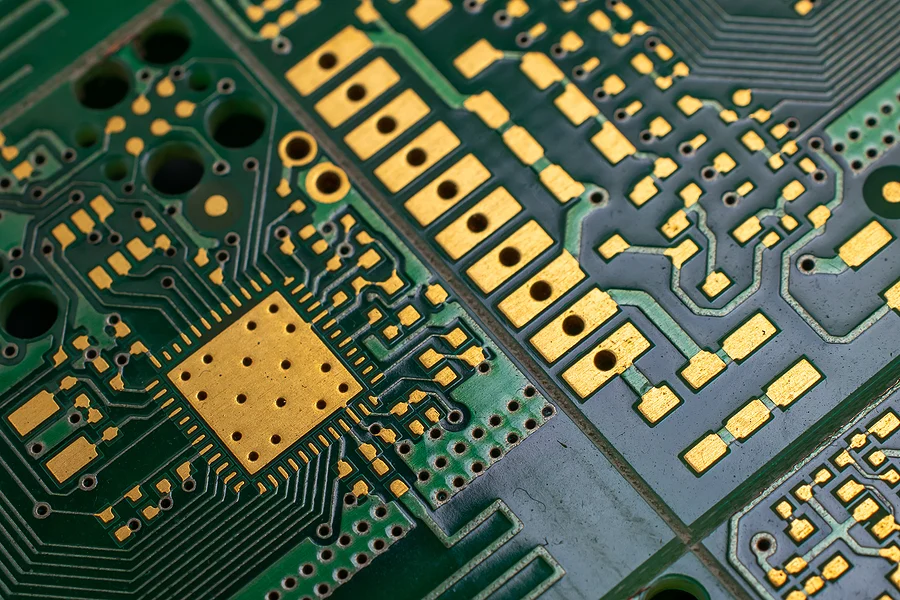
Why the PCB HS Code Matters
Now that we have explored the significance of PCBs in electronics, let’s delve into why the PCB HS Code matters and how it affects international trade:
1. Efficient Customs Procedures
The PCB HS Code streamlines customs procedures for both importers and exporters. When a shipment of PCBs arrives at a port of entry, customs officials can quickly identify and classify the products using the HS Code. This expedites the customs clearance process, reducing delays and ensuring that shipments move smoothly through the import or export process.
2. Accurate Tariff Determination
The correct application of import duties and tariffs is a critical aspect of international trade. The PCB HS Code ensures that the appropriate rates are applied to PCBs, preventing overpayment or underpayment of duties. Importers can estimate their costs more accurately, and customs authorities can verify the correctness of tariff calculations.
3. Reliable Trade Statistics
Governments and international organizations rely on HS Codes to compile trade statistics accurately. Accurate data on PCB imports and exports are essential for economic analysis, policy-making, and monitoring trade trends. By using the PCB HS Code, trade authorities can produce reliable reports and insights into the electronics industry’s global movements.
4. Trade Agreements
Many countries negotiate trade agreements that include specific tariff rates for various products, including PCBs. The PCB HS Code helps identify products covered by these agreements, potentially reducing or eliminating certain tariffs. This can have a significant impact on the cost of importing and exporting PCBs in regions where trade agreements are in place.
5. Product Identification
The PCB HS Code provides a common language for identifying and categorizing PCBs. In the diverse world of electronics, where various types of PCBs exist for different applications, having a standardized classification system is invaluable. Importers and customs officials can be confident that they are dealing with PCBs when using the HS Code, preventing misunderstandings and misclassifications.
Conclusion
In conclusion, the HS Code 8534.00.00 is a fundamental code that simplifies the international trade of Printed Circuit Boards. These electronic components are integral to various industries and applications, making accurate classification and identification essential for global commerce.
Whether you are involved in the electronics industry or international trade, knowing and using the correct HS Code for PCBs is a valuable asset. Whether you are an importer, exporter, or customs official, understanding the HS Code for PCBs is essential for smooth and efficient international trade. It ensures that the correct import duties and tariffs are applied, reduces customs processing times, and contributes to accurate trade statistics.

I am Peter Gong. I have been working in PCB and PCBA industry for 15+ years now. I have been a part of the PCB revolution with my dedication to circuit board technologies and creative ideas. I write in FX PCB to impart my knowledge on PCB and PCBA for all circuit board lovers, manufacturers, and users.
Our Recommended Products for You
- Published in Informative
Significance of Quick Turn PCB for Modern Electronics
Significance of Quick Turn PCB for Modern Electronics
Printed Circuit Boards (PCBs) are the hidden heroes of modern electronics, powering everything from smartphones to cubesat satellites. Behind these intricate electronic systems lies the need for speed and efficiency in PCB development. This need has given rise to the concept of Quick Turn PCB services, a game-changer for industries where time-to-market, prototyping, and design iterations are critical. In this article, we’ll delve into what Quick Turn PCB’s are, why it’s essential, explore sfxpcb’s PCB fabrication, examine how this PCB can revolutionize businesses, and offer insights into choosing the right Quick Turn PCB.
Table of Contents
Our Recommended Quick Turn PCB

As a fast turnaround or quick-turn PCB Assembly Manufacturer /factory in Shenzhen China, FX PCB is able to fulfill orders in a fast delivery time with our modern technologies used in production.
Our factory carries out the assembly and installation of printed circuit boards to order. During the development and manufacturing process, constant quality control is carried out. We strictly follow your Gerber file and Bom list for your fast turnaround or quick turn PCBA projects, and we will also be glad to suggest you the alternative for your passive components to decrease your cost, but all replacement components need you to approve and make the final decision on whether you want to use them.
Understanding Quick Turn PCB
Quick Turn PCB encompasses the expedited process of manufacturing and delivering PCBs within a remarkably short timeframe. Traditional PCB manufacturing typically requires a lead time of 2-3 weeks, while Quick Turn PCB services can drastically reduce this period to a matter of days. These manufacturing are indispensable for companies aiming to swiftly transition their prototypes from the drawing board to the testing phase.
The Crucial Role of Quick Turn PCB
The importance of Quick Turn PCB services cannot be overstated, especially in industries where innovation and rapid development are paramount. Let’s explore several ways in which these manufacturing are instrumental:
1. Accelerated Time-to-Market:
In today’s fast-paced world, getting products to market quickly is a competitive advantage. This PCB manufacturing drastically shortens the development cycle, allowing businesses to introduce new products ahead of the competition.
2. Enhanced Prototyping Capabilities:
Prototyping is an integral part of the product development process. Fast Turn PCB empowers businesses to rapidly produce prototypes, iterate on designs, and refine their concepts without extended delays.
3. Cost Savings Through Testing:
Before committing to mass production, businesses often need to test new designs and create prototype units. Fast Turn PCB manufacturing enables cost-effective small-batch production for testing, reducing the risk of costly errors during mass manufacturing.
4. Improved Testing Capabilities:
Quality control and testing are essential to ensure reliable and defect-free products. Quick Turn PCB aid businesses in enhancing their testing capabilities, leading to higher-quality end products and fewer defects.
Redefining Quick Turn PCB Fabrication by SfxPCB
When it comes to Quick Turn PCB, sfxpcb is a leading player in the industry. Known for its commitment to delivering high-quality PCBs with lightning-fast turnaround times, sfxpcb.com sets new standards for efficiency and reliability. Let’s explore what sets sfxpcb.com apart:
- Remarkable Turnaround Time: Sfxpcb boasts a remarkable lead time of just 24 hours for this PCB fabrication. This rapid response time outpaces the industry standard, allowing businesses to stay ahead in the fast-evolving electronics landscape.
- Competitive Pricing: Sfxpcb.com combines advanced technology with efficient processes to maintain highly competitive pricing. This means that customers can access top-notch PCBs without breaking the bank.
- Uncompromising Quality: Despite the lightning-fast turnaround, sfxpcb maintains stringent quality control measures to ensure the highest standards of reliability and performance in their PCBs. Quality is never sacrificed for speed.
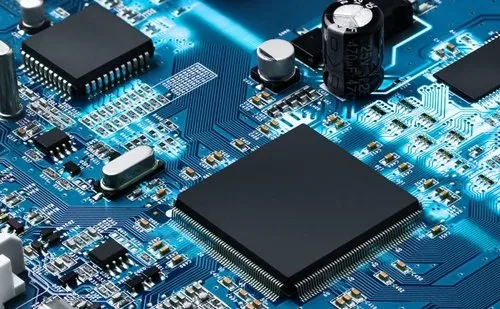
How Quick Turn PCB Services Benefit Businesses
Quick Turn PCB manufacturing offers a multitude of advantages for businesses, spanning various industries. Here’s a closer look at how these manufacturing can revolutionize your business:
1. Reduced Time-to-Market:
As mentioned earlier, Quick Turn PCB significantly reduces the time it takes to bring new products to market. This speed is particularly advantageous in industries where innovation drives success.
2. Cost-Efficient Prototyping:
Businesses can save substantial resources by using this PCB for rapid prototyping. This allows for iterative design improvements before full-scale production begins.
3. Enhanced Product Quality:
This Fast turnaround PCB enables rigorous testing and refinement of designs, resulting in higher-quality products with fewer defects. This ultimately leads to increased customer satisfaction and loyalty.
4. Flexibility for Small Batches:
Whether you need a handful of prototypes or a limited production run, Quick Turn PCB caters to businesses with varying quantity requirements.
Choosing the Right Quick-Turn PCB Manufacturer
Selecting the right Quick Turn PCB manufacturer is a critical decision for businesses seeking to leverage these manufacturing effectively. Here are key factors to consider:
- Proven Track Record: Look for a provider with a demonstrated history of delivering high-quality PCBs on time. Customer reviews and case studies can provide valuable insights.
- Manufacturing Capabilities: Assess the provider’s manufacturing capabilities, including their equipment and expertise in producing different types of PCBs. This ensures they can meet your specific requirements.
- Online Ordering and Tracking: Opt for a provider that offers online ordering and real-time tracking of your PCBs. This streamlines the process and keeps you informed about your order’s status.
- Customization Options: Evaluate the provider’s range of customization options, including base materials, types, finishes, and layer stackups. Customization should align with your project’s unique needs.
- Clear Communication: Effective communication is key. Clearly communicate your requirements, including lead time, quantity, and any customization options, to ensure a smooth manufacturing process.
Conclusion: Empowering Innovation with Quick Turn PCB Services
Quick Turn PCB has become an indispensable tool for businesses aiming to stay competitive in the dynamic world of electronics. With sfxpcb.com at the forefront of rapid PCB fabrication, businesses can harness the advantages of accelerated time-to-market, cost-efficient prototyping, and enhanced product quality. By selecting the right PCB manufacturer and considering the factors discussed in this article, businesses can navigate the fast-paced electronics industry with confidence and efficiency. Embracing Quick Turn PCB manufacturing is not just a choice but a strategic imperative for those looking to lead in innovation and meet the demands of modern electronics.
Related: PCBA, Ceramic PCB, Glass pcb

I am Peter Gong. I have been working in PCB and PCBA industry for 15+ years now. I have been a part of the PCB revolution with my dedication to circuit board technologies and creative ideas. I write in FX PCB to impart my knowledge on PCB and PCBA for all circuit board lovers, manufacturers, and users.
Our Recommended Products for You
- Published in Informative
BGA PCB (Ball Grid Array Printed Circuit Boards)
BGA PCB (Ball Grid Array Printed Circuit Boards)
In the rapidly advancing landscape of electronics, innovation is the driving force behind smaller, more powerful, and energy-efficient devices. Among the many technological breakthroughs that have propelled this evolution, Ball Grid Array (BGA) printed circuit boards (PCBs) stand out as a pivotal development. These compact and high-performance PCBs have revolutionized the design and manufacturing of electronic devices. In this article, we will explore the history, working principles, advantages, considerations, and future prospects of BGA PCBs.
Table of Contents
Our Recommended PCBA Products

The modern-day electronics world depends heavily on the Printed Circuit Boards (PCBs) as its backbone. A PCB is a medium to transfer the current through its copper pathway and it dissipates the heat to keep the tiny yet highlycomplex electronic equipment on it in perfect condition.
If you are to get the best PCBA and PCB for your digital devices, you have to know this PCB assembly process thoroughly. FX PCB with its years of experience understands this need and thus, we present you the detailed guideline.
FX PCB dont follow the standerd manufacturing process is no exception to it. Our process includes solder pasting on the PCB base, placing the electronic components in the right place, soldering them with the PCB, checking the accuracy, final inspection, and delivery to customers.
A Historical Perspective
The concept of BGA technology dates back to the early 1960s when IBM first introduced it for their large-scale mainframe computers. However, it wasn’t until the late 1980s and early 1990s that BGA packaging gained significant traction in the consumer electronics market. This growth was driven by the need for smaller form factors in products like laptops, mobile phones, and game consoles.
Understanding BGA PCBs
At its core, a Ball Grid Array PCB is a type of integrated circuit (IC) packaging and interconnection technology used in printed circuit boards. What sets BGA apart is the arrangement of numerous small solder balls on the bottom side of the IC package. These solder balls are precisely positioned in a grid pattern, giving rise to the name “Ball Grid Array.”
How BGA PCBs Work
The functionality of a BGA PCB is deceptively simple. The IC is attached to the PCB by aligning the solder balls on the IC package with matching pads on the PCB. This precise alignment ensures that each solder ball establishes a secure and low-resistance connection between the IC and the PCB. The assembly then undergoes a controlled reflow soldering process, during which the solder balls melt and solidify, firmly anchoring the IC in place.
Advantages of BGA PCBs
The widespread adoption of BGA PCBs can be attributed to their numerous advantages:
Space Efficiency:
BGA technology’s most celebrated feature is its ability to achieve a high-density interconnect. By employing a closely spaced array of solder balls, BGAs reduce the overall footprint of the PCB. This compactness is invaluable in modern electronics, where size constraints are paramount.
Enhanced Electrical Performance:
Shorter trace lengths in BGA designs translate into reduced signal propagation delays and attenuations. This results in improved signal integrity and reduced susceptibility to electromagnetic interference (EMI). BGAs are particularly well-suited for high-frequency and high-speed applications.
Improved Heat Dissipation:
The multitude of solder balls in a BGA package serves as efficient pathways for heat transfer. This design feature facilitates the effective dissipation of heat generated by the IC, a critical factor in power-hungry components in contemporary electronic devices.
Mechanical Durability:
BGA components exhibit remarkable resilience against mechanical stresses and vibrations. This durability surpasses that of alternative interconnection methods like through-hole technology, making BGAs a favored choice for applications exposed to harsh operating conditions.
High Pin Counts:
BGA packages can accommodate a larger number of pins or connections. This makes them indispensable for complex ICs such as microprocessors, FPGAs, and other system-on-chip (SoC) devices.
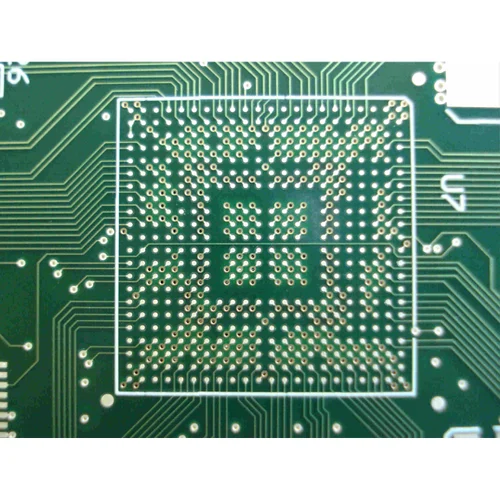
Considerations When Using BGA PCBs
While the advantages of BGA PCBs are clear, their integration requires careful consideration of certain factors:
Soldering Complexity: The soldering of BGAs necessitates precise techniques and specialized equipment. This includes reflow soldering ovens with meticulously controlled temperature profiles. Inadequate soldering practices can lead to defects like solder bridging or cold joints, jeopardizing the reliability of the PCB.
Inspection and Testing Challenges: The concealed nature of solder joints beneath the IC package complicates inspection and testing. X-ray inspection is often employed to ensure the quality of solder joints, adding an extra layer of complexity to the manufacturing process.
Repair Difficulty: Unlike through-hole components that are relatively easy to replace or repair, BGAs present a greater challenge in this regard. The intricate soldering involved can make rework complex, potentially increasing maintenance costs and reducing the overall repairability of electronic devices.
Thermal Management: While BGAs enhance heat dissipation, it is essential to implement appropriate thermal management solutions. These may include heat sinks, thermal vias within the PCB, or advanced cooling systems to prevent overheating of critical components.
Signal Integrity Design: Achieving optimal signal integrity in BGA-based designs necessitates meticulous planning. This includes selecting suitable PCB materials, designing controlled impedance traces, and managing signal routing to minimize crosstalk and signal loss.
Cost Considerations: BGAs can be more expensive to manufacture and repair due to the specialized equipment and expertise required. Designers must carefully weigh these costs against the benefits of using BGA technology for their specific application.
The Future of BGA PCBs
As technology continues to evolve, BGA PCBs are poised to play an increasingly vital role in electronic design. Several emerging trends and future developments point to the continued growth of this technology:
Miniaturization: In response to consumer demand for smaller, more portable devices, BGA technology will continue to be instrumental in achieving miniaturization goals. This trend is especially evident in the development of wearables, Internet of Things IoT devices, and mobile electronics.
High-Performance Computing: BGA packages will remain the go-to choice for high-performance computing applications. Their ability to handle high pin counts and efficiently dissipate heat makes them indispensable for cutting-edge processors and memory modules.
5G and Beyond: The rollout of 5G networks and the increasing demand for high-speed data transmission will further drive the adoption of BGA technology. BGAs will find use in advanced RF components and high-frequency modules.
Automotive Electronics: The automotive industry will increasingly leverage BGA PCBs due to their reliability and ability to withstand harsh environmental conditions. These boards will be incorporated into advanced driver-assistance systems (ADAS), infotainment systems, and electric vehicle components.
Medical Devices: Miniaturized, high-performance medical devices will benefit from BGA technology. These devices will provide improved diagnostic capabilities and treatment options.
In conclusion, Ball Grid Array (BGA) PCBs have become a linchpin in the modern electronics landscape, offering a myriad of advantages that address the demands of today’s electronics industry. Nevertheless, their adoption necessitates a nuanced understanding of soldering techniques, inspection and testing protocols, repair intricacies, and thermal management. As technology continues its relentless march forward, BGA technology is poised to play a pivotal role in enabling smaller, more potent, and more energy-efficient electronic devices across diverse industries.
Related: PCBA, Glass PCB, Ceramic PCB

I am Peter Gong. I have been working in PCB and PCBA industry for 15+ years now. I have been a part of the PCB revolution with my dedication to circuit board technologies and creative ideas. I write in FX PCB to impart my knowledge on PCB and PCBA for all circuit board lovers, manufacturers, and users.
Our Recommended Products for You
- Published in Informative

